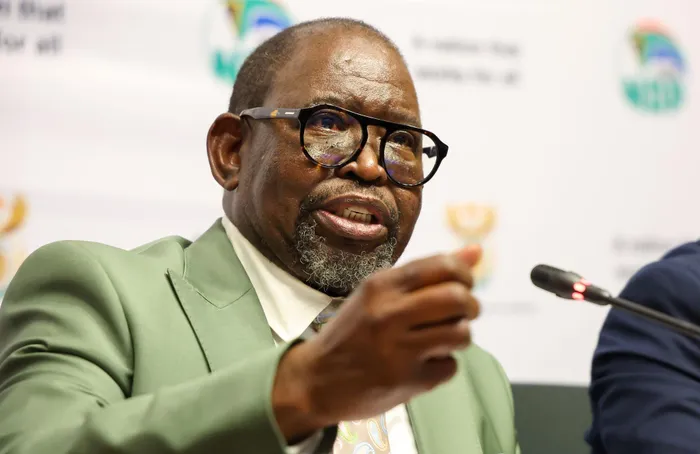Revenue gains, lower inflation target bolster fiscal outlook but spending pressures loom: Moody's

Finance Minister Enoch Godongwana tabling the MTBPS in Parliament last week. According to the National Treasury, stronger-than-expected tax revenue across value-added tax, corporate income tax, and other categories has allowed the government to slightly brighten its fiscal expectations for 2025/26 and the years that follow.
Image: Supplied/GCIS
Moody's Ratings has said that South Africa’s latest Medium-Term Budget Policy Statement (MTBPS) signals a modest yet meaningful improvement in the country’s fiscal trajectory.
This marked the first time since the pandemic that government deficit projections have not worsened relative to the main budget.
According to the National Treasury, stronger-than-expected tax revenue across value-added tax, corporate income tax, and other categories has allowed the government to slightly brighten its fiscal expectations for 2025/26 and the years that follow.
The revenue windfall has been broad-based, pointing to a temporarily buoyant tax base despite the sluggish economy.
For the current fiscal year, roughly 80% of the higher-than-budgeted revenue has been channelled into additional net spending, while 40% has been set aside for the contingency reserve.
As a result, the primary surplus of the main budget — which captures central government finances and is key to stabilising debt — is projected to improve to nearly 1% of GDP, up 0.2 percentage points from earlier estimates.
However, the gains are being partially offset by higher interest costs, leaving the overall deficit unchanged at 4.5% of GDP for 2025.
From next fiscal year onwards, government is projecting a gradual narrowing of the deficit, continued growth in the primary surplus, and eventually a reduction in the interest bill. Together, these shifts are expected to place South Africa’s debt-to-GDP ratio on a downward path for the first time in years.
But Moody's analysts warned that the projection is built on shaky assumptions. They said that sustaining fiscal progress will require a dynamic and resilient tax base, with Treasury banking on a revenue elasticity of 1.4 in 2026, a level dependent on stronger economic activity.
"Additionally, the outlook will also depend on a pickup in economic growth to 2% by 2028, which South Africa has not reached in the past decade, as structural reforms to ease infrastructure and energy constraints advance," Moody's said.
"For fiscal 2026, primary spending is expected to fall 0.4 percentage points of GDP compared with fiscal 2025, followed by a 0.5-point reduction in fiscal 2027 (excluding contingency reserve effects). Together, these measures form the core strategy to place the debt burden on a downward trajectory."
Meanwhile, Moody's said the government’s recent decision to lower the effective inflation target to 3%, down from the midpoint of the long-standing 3%–6% range, is reshaping fiscal metrics. The adjustment has reduced the GDP deflator, mechanically raising the debt-to-GDP ratio to 77.9% for 2025, a one-off statistical hit.
However, Moody's argued that the medium-term benefits outweigh the short-term optics. It said a lower inflation anchor is expected to reduce borrowing costs for both government and domestic issuers, supporting fiscal stabilisation efforts.
Despite the improvements, most baseline forecasts, including Moody’s, continue to project only gradual fiscal consolidation, a moderate rebound in economic growth, and a slow decline in interest rates.
Under these conditions, Moody's said debt-to-GDP is likely to remain broadly stable rather than falling sharply over the coming years.
"However, under our baseline scenario, we continue to foresee a more gradual fiscal consolidation, moderate pickup in growth and protracted decline in interest rates leaving government debt-to-GDP broadly stable over the medium term," Moody's said.
BUSINESS REPORT